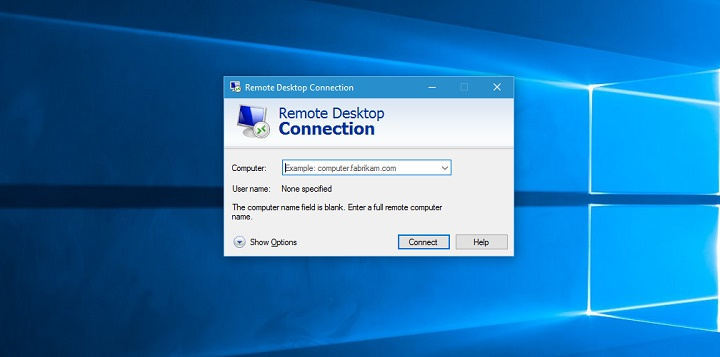


This means if you move a server between groups, you are able to ensure that all previous configurations will not change. You’ll be presented with the System Properties panel, where you’ll want to switch to the Remote tab on the right. So, you no longer need to specify server details each time you create a new remote connection.įurthermore, all passwords are encrypted by default and stored locally. Source: Windows Central (Image credit: Source: Windows Central) Under the 'PC name' section. To enable Remote Desktop Connections with the old Control Panel, use the WIN + R shortcut key combination to pull up the Run dialog, and then type in sysdm.cpl and hit the Enter key. It is necessary to note that all entries inherit their login settings, thus maximizing your workflow. In addition, you can see all the servers in a group as a collection of thumbnails. It gives you the ability to organize all the servers, so each time you need to join a specific computer, all the connection details are automatically saved. With the help of this utility you are able to consolidate different remote connections into a simple and intuitive window. You have the ability to specify server settings, login details, gateway and connection options, as well as to configure local resources such as sound quality, remote sound and color depth for better preview capability. Once you assign the name, you can add as many servers as you want. Initial configurationīefore using the tool, you need to create a new group. Remote Desktop Connection Manager supports all Windows versions, up to Windows 10 (Windows 11) and Windows Server 2019. Although there are other utilities that provide the same features, for example mRemoteNG, the aspect that makes this app stand out is the multiple groups and sessions that can be created within a single interface. Remote Desktop Connection Manager is a comprehensive program for Windows that enables users to manage and organize remote connections.


 0 kommentar(er)
0 kommentar(er)
